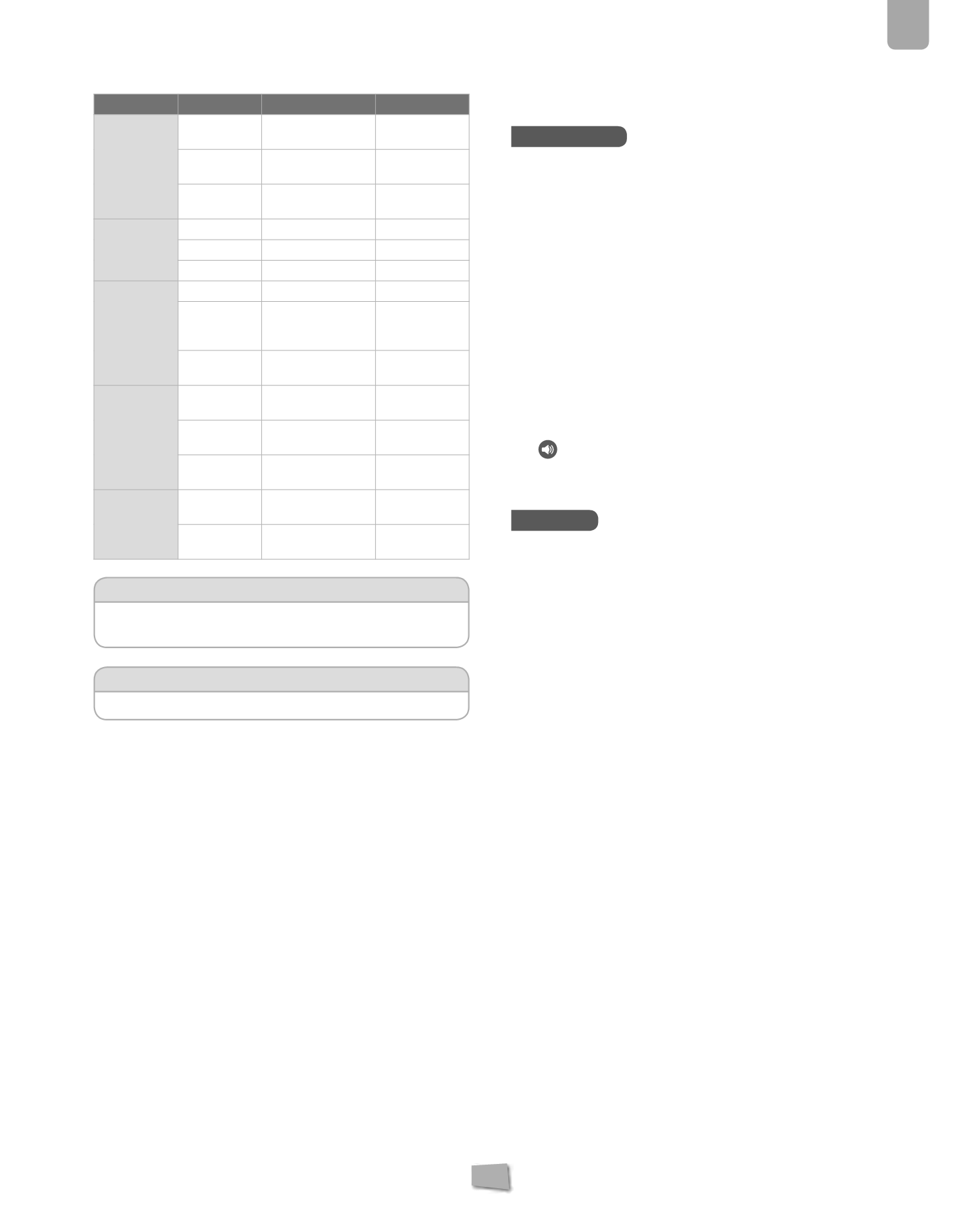
109
5
Structures
Stress
Example
Load
Reaction
Traction
Pendant
Weight of the
pendant
Neck
Shoulder
straps
Weight of the piece
of clothing
Shoulders
Cord of a
Venetian blind
Weight of the
Venetian blind
Wall fastening
Compression
Chair legs
Weight of the chair Ground
Legs
Own weight
Ground
Tree trunk
Weight of the tree Ground
Bending
Shelf
Weight of the books Side panels
Bed base
Weight of the
mattress and the
people
Legs of the bed
base
Wardrobe rail
Weight of the
clothes
Attachment to
the wardrobe
Torsion
Keys
Force of turning the
key by hand
Lock
Pencil
sharpener
Force which we use Resistance of
the pencil
Bicycle
Pedalling
Resistance of
the pedals
Cutting
Hook
Weight of the
picture
Wall
Guillotine
Blade
Fixed part of the
guillotine
Animation:
TYPES OF STRESS
From this animation students can learn about the effects which
stress has on objects.
Reinforcement activities:
TYPES OF STRESS
More activities for learning about the different types of stress.
Answer key
Understand
9.
What kind of stress do the legs of a chair support?
When is the pressure on a seat greater; when you or
someone heavier than you sits on a chair? Why?
Compression; the stress is greater when the force used is
greater. The stress which the legs of the chair undergo is one
of compression. The legs are compressed between our weight
and the floor which does not let them sink into it.
10.
What is the best way to break a piece of uncooked
spaghetti: by stretching or bending it? Why? What
kind of force is acting on the piece of spaghetti in
each case?
It is easier to break the spaghetti by bending it. This is a
bending stress whereas stretching it would be one of traction.
This is due to the shape of the spaghetti and the fact that it’s
so thin and hard that it can’t withstand being bent.
11.
Listen and decide what kind of force is applied
in each case and what stress each each object
experiences.
Analyse
12.
Look at the photo. Analyse the stress that the bridge
will support if a heavy load is in the middle. Illustrate
how the different parts of the bridge would deform.
If a load was placed on the bridge, its centre would tend to
dip, compressing the pillars which reach as far as the arch
below the centre and the whole arch that forms the bridge.


